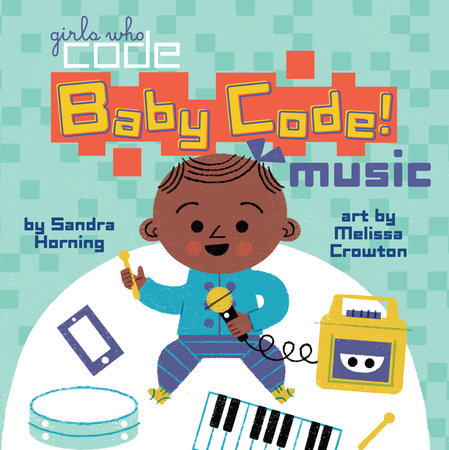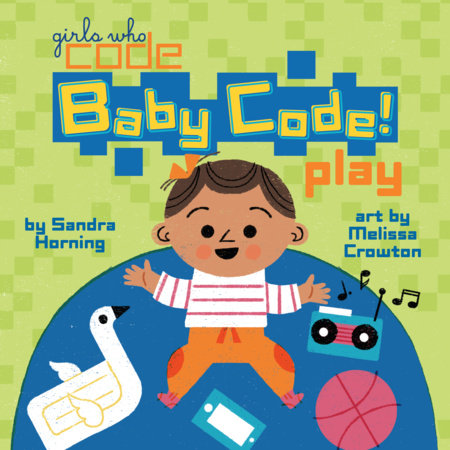The Baby Code! Series Relates Coding to a Child’s World
by Sandra Horning
When I was first contacted by Penguin about writing a board books series in partnership with the nonprofit organization Girls Who Code, I thought, “Is it possible to introduce coding to babies?” Writing a board book with only 14 pages doesn’t sound that difficult, but writing a board book about coding? Do I even know enough about the topic?
Although I am a children’s author and library director now, in my 20s I worked for a small software company, and then for IBM. I wasn’t a programmer, but I worked closely with people writing code. My job was to test the software — I would go back and forth with the programmers until the software was ready for users to test. I understand the basics of coding, so I should be able to write board books about it, right?
It turns out knowing enough was only part of the challenge — the main issue was figuring out what approach to take. When I wrote my first draft, it ended up explaining what a computer is because I thought I couldn’t introduce coding without it. Well, it took an entire book to explain the computer’s hardware, and I hadn’t even used the word “code” in the text! I got feedback from my editorial team to try and focus more on simpler, specific aspects of coding, so I wrote a draft called “Baby Learns Loops,” which tackled a core coding concept. But no matter how I framed it, the concept felt too big and difficult for a board book.
My editorial team suggested I try focusing on computer applications instead (how computers are used in everyday tasks), and ways that a computer affects a baby’s life. That’s what finally led to my first draft of Baby Code!, more than a month after I had started the project. Yes, crafting 14 sentences took more than a month. (It also took much patience from my wonderful critique group who gave me feedback on every version. Thank you, ladies!)
After all that effort, will a baby understand coding when an adult reads Baby Code! aloud? Of course not. Yes, there are real code snippets incorporated into the book to give a feel for actual coding — but they don’t need to be read for the narrative to work. And just like no one expects a baby to suddenly learn to read words, no one should expect a baby to learn code. The purpose of these books is to introduce the concept of coding in a way that relates to a baby’s world. The reality is that many babies are exposed to computers from the minute they are born. Think of all the complicated equipment in the hospital at birth, and of how many parents and grandparents take photos of their newborns with smartphones — most babies encounter computers from their very first day of life!
While a baby might not understand technology, she quickly learns how to work with it. As soon as my nephew could say a few words, he would yell, “Wake!” directly into his baby monitor. He understood that the monitor somehow communicated with his parents. These board books feature computers that babies interact with on a daily basis. The code behind the computers is what allows the computer to interact with a person. I believe young children (and these books are for toddlers, too) can grasp the idea that a person can tell a computer what to do — and that’s coding!
Whether a little reader understands the concept of coding or not, it’s worth reading these books to her — along with many other books, of course — because reading to a baby boosts her brain power and helps prepare her for reading on her own one day. So grab a Baby Code! book and enjoy reading it with a child. The seed to understanding the concept of coding might be planted along the way.
-
Get the Books:
-
Baby Code!
Also available from:




